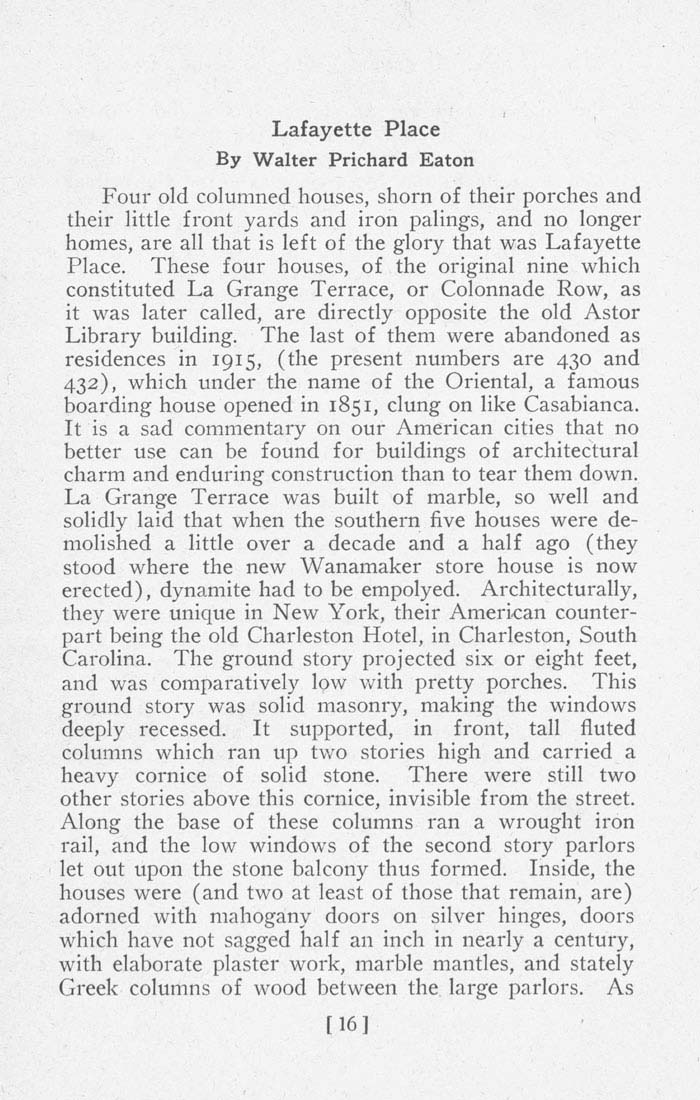Lafayette Place
By Walter Prichard Eaton
Four old columned houses, shorn of their porches and
their little front yards and iron palings, and no longer
homes, are all that is left of the glory that was Lafayette
Place. These four houses, of the original nine which
constituted La Grange Terrace, or Colonnade Row, as
it was later called, are directly opposite the old Astor
Library building. The last of them were abandoned as
residences in 1915, (the present numbers are 430 and
432), which under the name of the Oriental, a famous
boarding house opened in 1851, clung on like Casablanca.
It is a sad commentary on our American cities that no
better use can be found for buildings of architectural
charm and enduring construction than to tear them down.
La Grange Terrace was built of marble, so well and
solidly laid that when the southern five houses were de¬
molished a little over a decade and a half ago (they
stood where the new Wanamaker store house is now
erected), dyna,mite had to be empolyed. Architecturally,
they were unique in New York, their American counter¬
part being the old Charleston Hotel, in Charleston, South
Carolina. The ground story projected six or eight feet,
and was comparatively low with pretty porches. This
ground story was solid masonry, making the windows
deeply recessed. It supported, in front, tall fluted
columns which ran up tv/o stories high and carried a
heavy cornice of solid stone. There were still two
other stories above this cornice, invisible from the street.
Along the base of these columns ran a wrought iron
rail, and the low windows of the second story parlors
let out upon the stone balcony thus formed. Inside, the
houses were (and two at least of those that remain, are)
adorned with mahogany doors on silver hinges, doors
which have not sagged half an inch in nearly a century,
with elaborate plaster work, marble mantles, and stately
Greek columns of wood between the large parlors. As
[16]
|








